
This parent guide supports parents in helping their child at home with the 6th grade Science content.
- Subject:
- Science
- Material Type:
- Reference Material
- Vocabulary
- Author:
- Kelly Rawlston
- Letoria Lewis
- Date Added:
- 10/11/2022

This parent guide supports parents in helping their child at home with the 6th grade Science content.

This resource accompanies our Rethink 6th Grade Science course. It includes ideas for use, ways to support exceptional children, ways to extend learning, digital resources and tools, tips for supporting English Language Learners and students with visual and hearing impairments. There are also ideas for offline learning.

Please make a copy and edit to fit the needs of your students.

With this resource, students will use a knowledge check table to analyze their background knowledge about atoms.
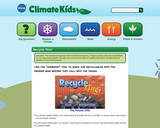
The site features an online game in which participants keep recyclable items out of the trash by guiding them into proper bins. Accompanying the game is a list of three categories of items that can be recycled, along with the benefits of doing so. This lesson is part of the Climate Kids website, a NASA education resource featuring articles, videos, images and games focused on the science of climate change.
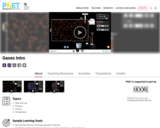
Sample Learning Goals
Describe the behavior of the gas particles in the box.
Identify the relationship between pressure, volume, temperature, and number of gas molecules.
Describe the relationship between particle-wall collisions and pressure.
Predict how changing temperature will affect the speed of molecules.
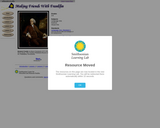
With this resource, students will learn the many different inventions of Franklin and other inventors in the 1700's. His famous work was in electricity, one of the 7 main types of technology. Franklin was known for coming up with two charges which he called positive and negative. He also discovered that lightning and electricity are the same.
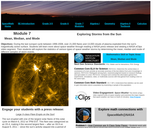
During the last sunspot cycle between 1996-2008, over 21,000 flares and 13,000 clouds of plasma exploded from the Sun's magnetically active surface. Students will learn more about space weather through reading a NASA press release and viewing a NASA eClips video segment. Then students will explore the statistics of various types of space weather storms by determining the mean, median and mode of different samples of storm events. This activity is part of the Space Math multimedia modules that integrate NASA press releases, NASA archival video, and mathematics problems targeted at specific math standards commonly encountered in middle school textbooks. The modules cover specific math topics at multiple levels of difficulty with real-world data and use the 5E instructional sequence.

A complete introduction to scientific investigation and the scope of physical science. Includes: states of matter, atoms, periodic table, chemical bonding, chemical reactions, carbon chemistry, chemistry of solutions, nuclear chemistry, motion, forces, Newton's Laws of Motion, work and machines, energy, waves, sound, electromagnetic radiation, visible light, electricity, and magnetism.

This course was created by the Rethink Education Content Development Team. This course is aligned to the NC Standards for 6th Grade Science.

This course was created by the Rethink Education Content Development Team. This course is aligned to the NC Standards for 6th Grade Science.

This course was created by the Rethink Education Content Development Team and is aligned to the NC Standards for 6th Grade Science.
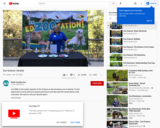
Join Nikki in this week's episode of Zoo Science as she introduces you to density. Try the experiment at home with your parent's permission to see the difference of densities in liquids!
We have also created a helpful clip if you cannot watch whole program:
6.P.2 - What is Density? (2 min): https://youtu.be/ulLtD5jbt1Q?t=24
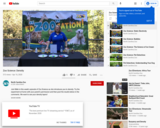
Join Nikki in this week's episode of Zoo Science as she introduces you to density. Try the experiment at home with your parent's permission to see test different densities!
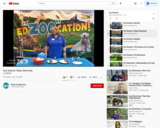
Did you ever wonder what caused that *Zap* when you touch a door knob? Join Nikki as you explore the science (and fun!) behind static electricity! The entire video covers Science Standards 3.P.3 and 6.P.3.
We have created some helpful clips if you are unable to watch the full video:
3.P.3 - Rubbing balloon on hair (3.5 min): https://youtu.be/7E8NxEyhCYQ?t=266
6.P.2 - Explanation of Atoms (3 min): https://youtu.be/7E8NxEyhCYQ?t=55